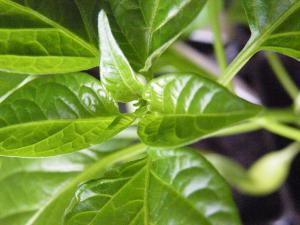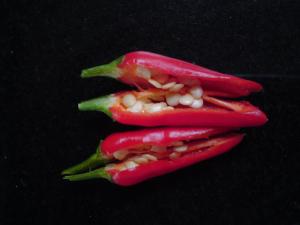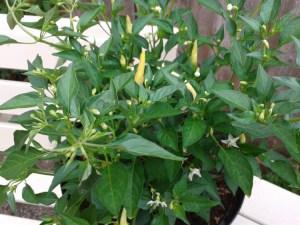Sad, I know, but this will be the last post for 2013 on growing chillies as the season for my plants has now come to an end.
That’s not to say I won’t continue to blog about chillies in all their glory, there is still plenty more to report – just not my chillies.
Before I say goodbye to my growing season I thought I’d give one last update from the Forget-me-Not Cultivation garden.

October Update
It was a fairly decent season for me this year. Not wildly amazing, nor masses of pods to show off but I have grown enough chillies this year to achieve two things:
- Have enough kept in the fridge/freezer for a six month period
- Have varieties that can be used in cooking that really spice the flavors up
I have also learnt a lot this year from areas of growing that have and haven’t done so well:
- The size of the chilli plants and how big they can grow
- The varieties I chose and the ones I didn’t.
- Types of housing for the chilli plants
- The importance of keeping the heat in the grow house, especially early on in the season
- To get sowing as early in the season as possible – indoors and heated!
That’s what I truly love about chillies, there are so many variables to the standard plant. From one year to the next I never know what varieties I’ll be growing, how well they will grow, how hot the pods will get and I’m always surprised by the weather, both good and bad.

Current Plants
I’m wondering whether to keep the larger (non ornamental varieties) over winter? Chilli plants by their very nature are perennial but in the past I’ve tended to start stocks fresh every year because any plants I do keep over winter tend to get attacked by mold due the cold and damp conditions, and by the following February start to look very sorry for themselves. However all my bigger varieties have taken so long to get growing without anything to show I’m thinking maybe I’ll let them try to flower again next yr and hopefully get to the pod stage. I’m talking of all my 7-pots, my aji umba and the rocoto orange.
The seaweed feed certainly worked. It made all 12 plants grow vigorously and I certainly had no problem chilli wise with the smaller compact varieties. The basket of fire plant and the loco F1 started producing chillies in late July and just haven’t stopped.
I shall make one final harvest from those two varieties and store them away so I can use them over winter. I think freezing or possibly pickling might be the way to go but either way I wouldn’t hesitate to grow these types again. The rich deep purple coloured pods of the Loco F1 aren’t all that hot (compared to say a habenero) but for their small size a couple of them are more than enough in every day cooking. The basket of fire on the other hand is hot, both at green and red stages. I couldn’t eat one raw lets put it that way! Again, just a couple were enough to use in every day cooking.
Both the plants were extremely pretty to watch growing as the colours changed on the pods. Unfortunately packed away in my little grow-house I only got to see them when I took them out twice a week for pest inspection and watering. They really need to be on display, hence why they are often referred to as patio chillies.

Looking forward
As any chilli grower know you can’t sit around long. This season may well and truly be over for me but that doesn’t mean I can’t start preparing for the start of sowing next Jan (which is only 91 days away!). Things I am considering for next year are:
- Creating, from scratch a better chilli house that can maintain heat temperatures more evenly
- Experimenting with new varieties
- Learning more about traditional varieties
- Understanding the types of varieties and what the difference is between Capsicum Chinense, and Capsicum Annuum
- Trying to over winter this years larger plants
- Perhaps grow more plants in raised beds?
So much to learn. I better crack on!
